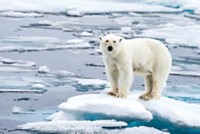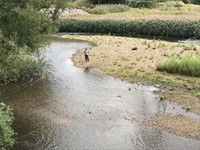Advertisement
Grab your lab coat. Let's get started
Welcome!
Welcome!
Create an account below to get 6 C&EN articles per month, receive newsletters and more - all free.
It seems this is your first time logging in online. Please enter the following information to continue.
As an ACS member you automatically get access to this site. All we need is few more details to create your reading experience.
Not you? Sign in with a different account.
Not you? Sign in with a different account.
ERROR 1
ERROR 1
ERROR 2
ERROR 2
ERROR 2
ERROR 2
ERROR 2
Password and Confirm password must match.
If you have an ACS member number, please enter it here so we can link this account to your membership. (optional)
ERROR 2
ACS values your privacy. By submitting your information, you are gaining access to C&EN and subscribing to our weekly newsletter. We use the information you provide to make your reading experience better, and we will never sell your data to third party members.
Biological Chemistry
A Better Way To Measure Chemical Risks
Toxic Chemicals: Study suggests regulators should focus more on how organisms modify pollutants in the environment than the chemicals' hydrophobicity
by Janet Pelley
August 17, 2010

As Congress strives to reform chemical regulation this year, experts hope that new legislation will improve how regulators assess a chemical's risk to human health. Until now, regulators have viewed a compound's hydrophobicity as the main determinant of whether it will accumulate in humans and cause trouble. A new study debunks this approach and points to biotransformation, a measure of how organisms in the food chain modify pollutant molecules, as the main driver of bioaccumulation (Environ. Sci. Technol., DOI: 10.1021/es101000w).
For the last 40 years, regulators have relied on hydrophobicity to assess chemicals' risks in the environment, because early studies discovered that birds at the top of aquatic food chains tended to accumulate the greasiest compounds, says Don MacKay, an environmental chemist at Trent University in Canada. But, he says, this rubric has flaws.
For example, two polychlorinated biphenyls, PCB 99 and PCB 101, have similar hydrophobicities. But, says environmental toxicologist Jon Arnot of the University of Toronto, Scarborough in Canada, previous research has shown that gray seals in the Baltic Sea have about six times more PCB 99 in their bodies than PCB 101.
The key chemical difference between the two PCBs is that seals and the fish that they eat more readily modify PCB 101 molecules than PCB 99 molecules. These biotransformations such as oxidation occur when an organism metabolizes pollutants they have absorbed from their environment. The modified chemicals then move through the environment when the organism excretes them or when another animal eats that organism.
Arnot and colleagues wanted to illustrate how biotransformation is a better predictor for bioaccumulation in humans. So they developed a model to estimate how contaminants would accumulate in a hypothetical 30-year old woman in southern Sweden. This so-called multi-media model accounted for pollutant exposures from the air, water, soil, and from the woman's diet.
The scientists then varied the contaminants' hydrophobicities and biotransformation rates separately to see which variable had the biggest impact on the hypothetical Swedish woman's pollutant load.
When they eliminated biotransformation from the model and allowed hydrophobicity to vary, the model predicted a range of chemical accumulation rates that only differed by a modest factor of 10. But when the researchers inputted the biotransformation rates and held hydrophobicities constant, the model's estimates of bioaccumulation varied by a factor of a billion.
The study is a "wake-up call" for regulators, MacKay says, because it shows that "biotransformation has a profound effect on concentrations of chemicals in humans." He thinks that if regulators start considering biotransformation, they might discover that some highly hydrophobic chemicals may have been unfairly restricted; meanwhile Bob Boethling, a microbiologist at the Environmental Protection Agency, points out that some more hydrophilic chemicals could present a bigger risk than previously thought.





Join the conversation
Contact the reporter
Submit a Letter to the Editor for publication
Engage with us on Twitter